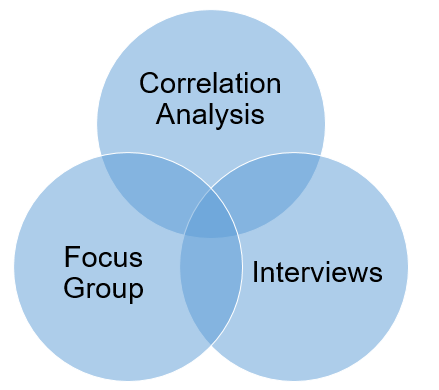- Introduction: Creating a High-Quality Linguistic Review
- Identification of the Topic: Linguistic Relativity as a Subject for Evaluation
- Hypothesis Statement: Relation between the Mindsets and Language Structures
- Significance of the Study
- Literature Review
- Data Collection Method, Time Schedule and Budget Evaluation
- Works Cited
Introduction: Creating a High-Quality Linguistic Review
The primary aim of the work is to develop a consistent model of language data evaluation. Specifically, the investigation proves that linguistic studies can rely on compound quantification formulas. The research paper follows a standard format of qualitative assessment development and includes the verification of the hypothesis as well as such supporting elements as literature review, data collection method, schedule, and budget analysis.
Identification of the Topic: Linguistic Relativity as a Subject for Evaluation
The subject of the investigation is the theory of linguistic relativity, which signifies the idea of the correlation between the structuring of a language and the personal abilities of the speakers (Carroll 1). The conception reflects the subjective and objective evictions of real perceptions (Lucy 292). Moreover, the theory verifies the surface language formation against the rates of cognitive processing, which are peculiar to the citizens of individual countries (Naveh and Ayres 740).
Hypothesis Statement: Relation between the Mindsets and Language Structures
The initial hypothesis that is identified as a research question claims that cultural and behavioral patterns are highly dependent on the formation means of the language (Lucy 3). The theory is verified through the sophisticated analysis of three empirical approached to the study questions. Specifically, the paper correlates the domain-centered, behavior-directed, and structure-oriented approaches.
Significance of the Study
The practical meaning of the research study refers to the area of academic cognition. Thus, it is acknowledged that getting an insight into the language structuring assists the learners of foreign languages in the mastering of the linguistic conceptions (Putz and Verspoor 6). Moreover, the theory is often regarded as a platform for psychological and philosophical investigations since it contrasts how certain individuals interpret the world conceptions (Niemeier and Dirven 8). Therefore, the research evaluation creates some meaningful implications both for further studies and practical implementations.
Literature Review
The research analysis relies on six quality resources. Mainly, it employs the referencing of three peer-reviewed articles and three academic books. Thus, the articles “Linguistic Relativity, Contrastive Linguistics, and Language Learning”, “Digital Span, Reading Rate, and Linguistic Relativity”, and “Linguistic Relativity” create a practical grounding for the study while such books as “Language Diversity and Thought”, “Evidence for Linguistic Relativity”, and “Explorations in Linguistic Relativity” describe the theoretical conception of the linguistic relativity theory, its applications and interpretations.
Data Collection Method, Time Schedule and Budget Evaluation
The justification of the linguistic relativity hypothesis is built on the appliance of a few fundamental data collection methods (Table 1). The primary means of data analysis, which is dedicated to the elaborate comparison of the domain-centered, behavior-directed, and structure-oriented approaches is correlation analysis. The method is highly characteristic of qualitative research studies and accounts for the identification of relationships between the variables.
Moreover, the evaluation stems from the employment of interviews and focus group observation. In this respect, the team of foreign language learners is targeted and questioned the idea of linguistic relativity. This method assists in outlining the individual perceptions of cultural realities through the scoped of language structuring.

Since the linguistic research study is not based on the usage of technological facilities additional investments, it is only slightly dependent on the budget allocations. Specifically, one needs to issue the resources that might be sufficient for the inclusion of the investigation members and participants. The schedule of the analysis conduction is quite sporadic as well. In general, it requires approximately one week for the sophisticated observations and one week for the subsequent data compilation.
Works Cited
Carroll, John. “Linguistic Relativity, Contrastive Linguistics, and Language Learning.” International Review of Applied Linguistics 1.1 (2009): 1-20. Print.
Lucy, John. Language Diversity and Thought, Cambridge: Cambridge University Press, 2002. Print.
Lucy, John. “Linguistic Relativity.” Annual Reviews of Anthropology 26.1 (2009): 291- 312. Print.
Naveh, Benjamin and Thomas Ayres. “Digital Span, Reading Rate, and Linguistic Relativity.” The Journal of Experimental Psychology 4.1 (2001): 739-751. Print.
Niemeier, Susanne, and Rene Dirven. Evidence for Linguistic Relativity, Amsterdam: John Benjamins Publishing, 2000. Print.
Putz, Martin, and Marjolyn Verspoor. Explorations in Linguistic Relativity, Amsterdam: John Benjamins Publishing, 2000. Print.